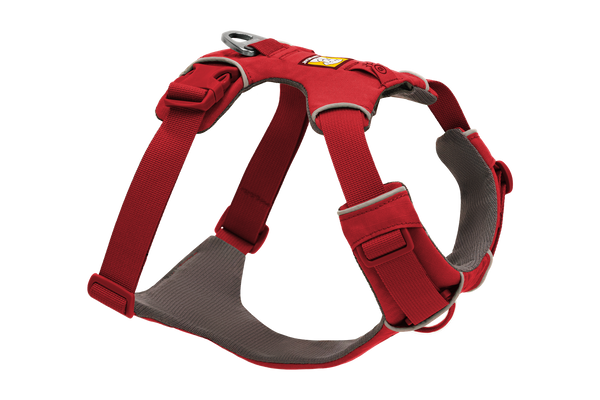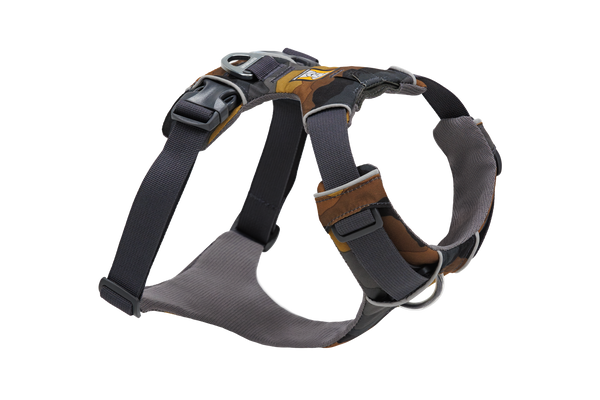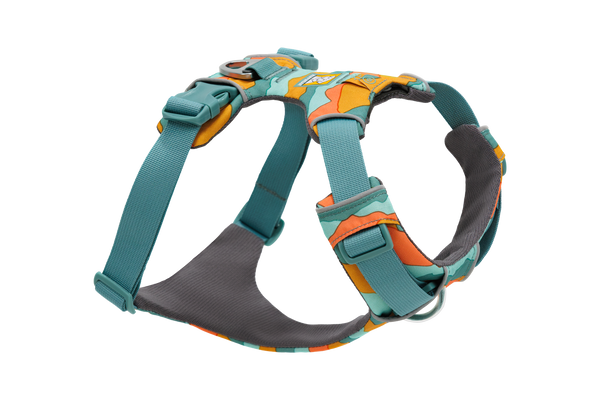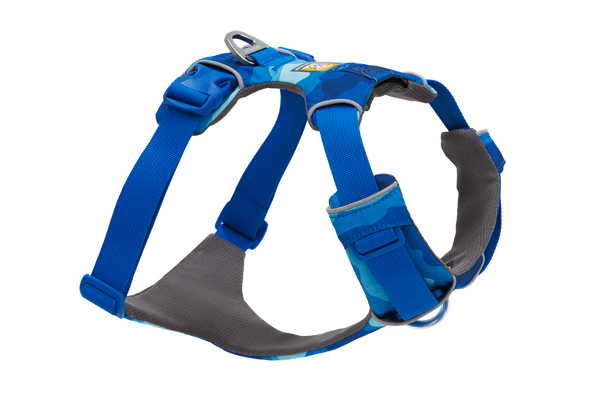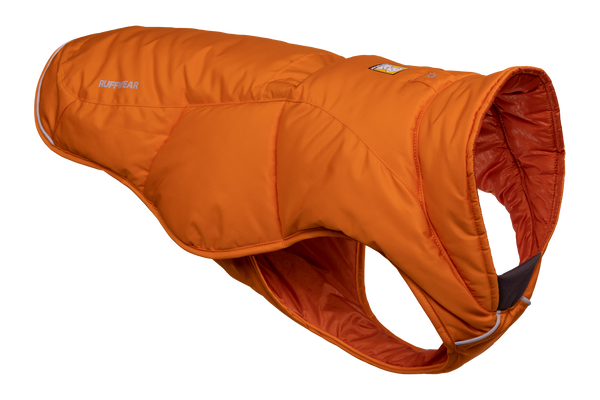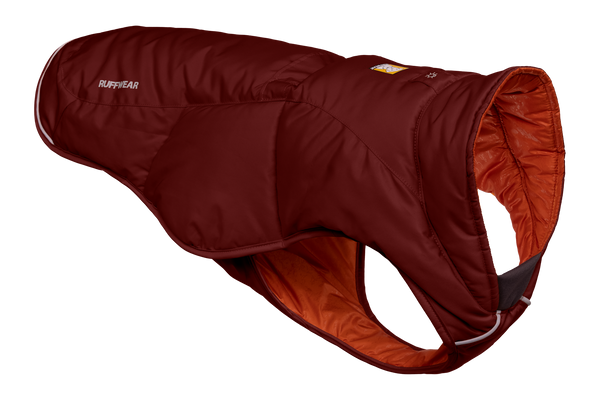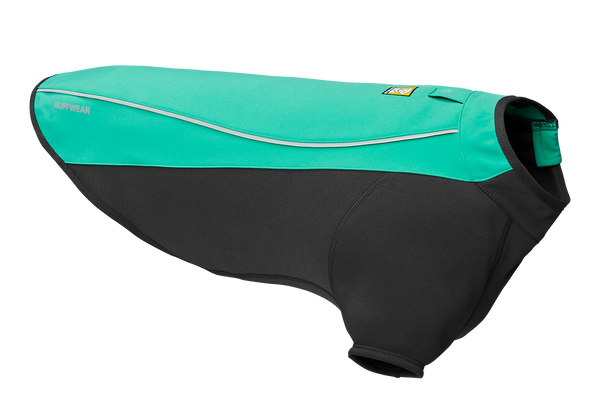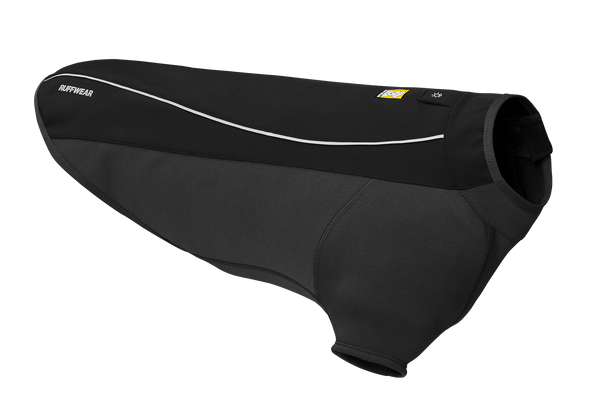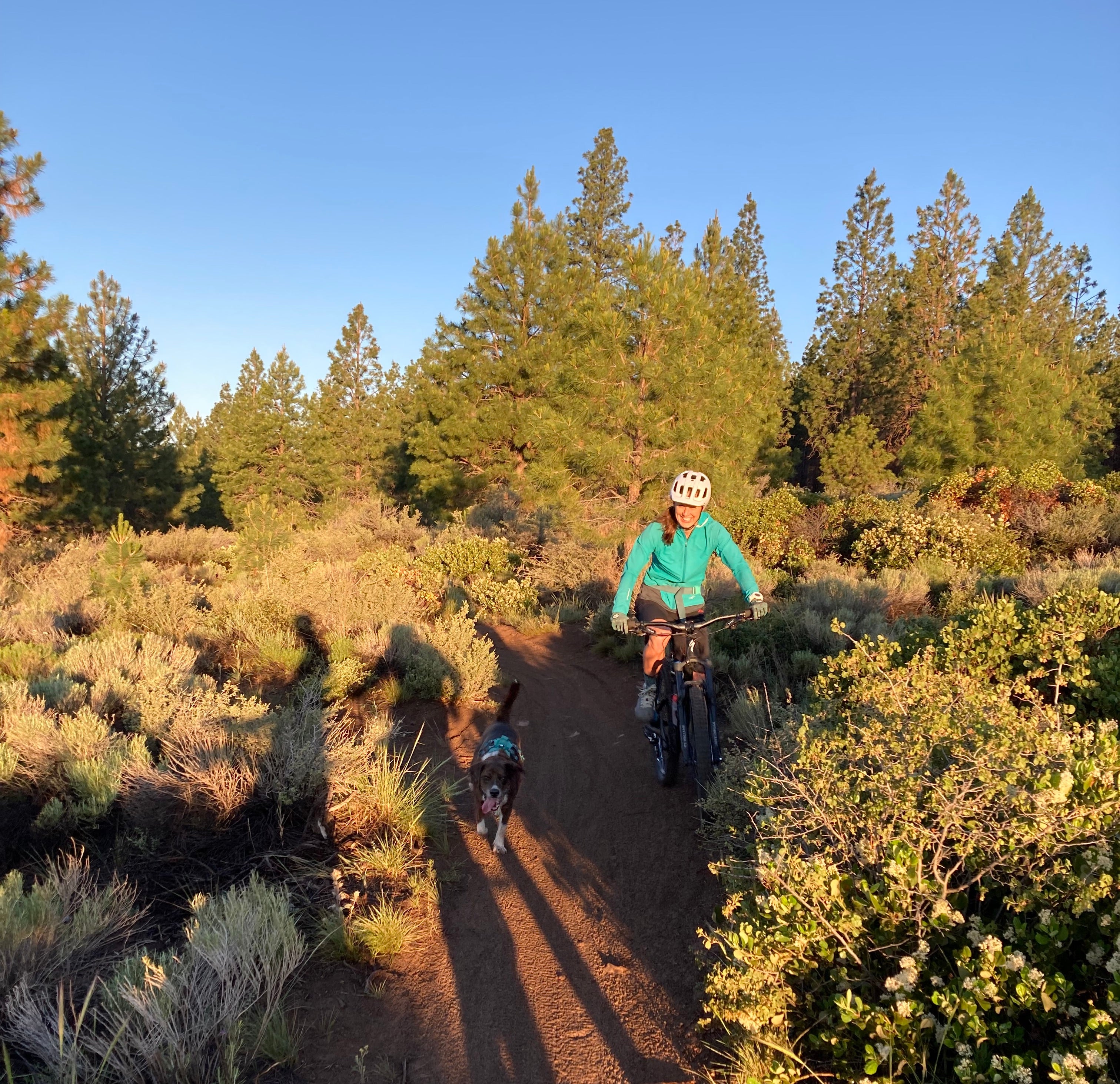Cool Safety Tips for Hot Dogs: Advice From Dr. Bronwyn Fullagar
Ruffwear Ambassador Dr. Bronwyn Fullagar, BVSc, MS, DACVS-SA is a specialist veterinary surgeon. She lives in the Canadian Rockies with her brindle hound, Arnie. When she's not working as a surgeon or volunteering for animal charities overseas, Bronwyn enjoys trail running, SUP riding, and skijoring with Arnie.
The snow is melting, the patios are opening, and dogs and their humans everywhere are excited to get back on the trails. Summer is full of long days, happy tails, and dusty tired legs. Before you and your canine companion embark on your first warm weather mission, I've gathered a few key safety tips to save you both a trip to the veterinary emergency room.

One of the most serious hazards for dogs during warmer months is heat stroke. The riskiest time for this condition is early in the season during spring, when warm weather first appears. When enjoying the outdoors with your dog, it is important to be prepared and know the signs to watch for, so you can intervene early and cool your friend before serious illness occurs.
Heat stroke is a heat-related illness that occurs when a dog’s core body temperature becomes elevated (above 104oF or 40oC) and can rapidly progress to become life threatening. Heat stroke can occur when a dog is accidentally left in a hot environment (e.g. a hot car), but more commonly, we see cases of exertional heat stroke, secondary to strenuous exercise.
Have you ever noticed how a 50oF (15oC) day feels hot when spring first arrives, but by the end of the summer you’re reaching for a sweater in the same weather? That’s because both humans and dogs can acclimatize to hot weather. It takes about 60 days at the beginning of every summer for a dog’s cardiovascular system (heart, lungs, and blood vessels) to adapt to the heat. This means that they become more heat tolerant as the season progresses. Fitter, more active dogs adapt faster and to a greater degree than sedentary dogs.
How do dogs cool themselves?
Unlike humans and horses, dogs do not sweat (apart from their paw pads), and rely on other methods of heat transfer to their environment.
Panting allows warm, humid air from the lungs to evaporate and to be exchanged with cool, drier air from the environment. Panting relies on having unobstructed, normal air flow through the upper airways, so dogs with obstructive breathing (e.g. all brachycephalic or “short-faced” dogs) will be less efficient at cooling themselves by this mechanism.
Ever noticed how your dog loves to sprawl on the tile floor in summer? This is called conduction and is more effective in short-haired dogs.
Like their human friends, dogs cool down faster when wet, especially if there is a breeze blowing. Ruffwear’s Swamp Cooler™ cooling apparel works this way – water from the wet cooling vest evaporates and is transferred away by air currents. It’s important to note that cooling apparel is ineffective if the environment is very hot, with poor ventilation (e.g. inside a hot car).
What are the signs of heat stroke for dogs?
Early signs of heat stress include heavy panting, lagging behind, acting tired, wanting to lie down, making ‘snoring’ noises while panting, loss of balance, and appearing agitated. If you notice these early signs while out on the trail, stop exercising immediately, provide water and shade, and wet your dog’s fur (or their cooling vest), then head home and call your local veterinarian for advice.
If these signs worsen despite your initial actions, if your dog is having trouble breathing, collapses, has brick red, blue or very pale gums, cannot walk or is not responding normally to you, seek veterinary attention immediately.
Which dogs are most at risk for heat stroke?
Although any age or breed of dog can overheat, some are much more susceptible than others and exercise that might be easily tolerated by one dog may be life threatening for another. Here are some examples of dogs who are less heat tolerant, so extra care should be taken during summer activities.
- Brachycephalic breeds: Brachycephalic means “short face” and refers to breeds such as French Bulldogs, English Bulldogs, Pugs, and Boston Terriers. Many brachycephalic dogs have a condition called brachycephalic obstructive airway syndrome, a congenital narrowing and obstruction of the upper airways. Because of this, they cannot pant effectively and can rapidly overheat, which can lead to heat stress and heat stroke. It is especially important to pay close attention to your short-faced friend and take extra precautions to keep them cool. A cooling vest might be a great summer addition to your Frenchie’s wardrobe!
- Puppies younger than 8-10 months of age and elderly dogs are less able to regulate their body temperature than healthy adult dogs.
- Dogs with heart disease, lung, or airway problems (e.g. laryngeal paralysis in older large breed dogs) are less capable of adapting to heat and panting to regulate their body temperature. If you are unsure whether your dog has a heart, lung, or airway condition, ask your veterinarian for advice.
- Dogs with thick or dark coloured hair coats will get hotter faster than dogs with thin, light coloured coats. Dogs with very thick fur coats (e.g. Newfoundlands, arctic breeds) will be more susceptible to heat stress than, for example, a desert-adapted breed like a Vizsla or a Whippet.
- Dogs who are overweight will be less efficient at thermoregulation in hot weather.
How can I prevent my dog from getting heat stroke?

Arnie sports the Singletrak™ Dog Hydration Pack in Red Currant.
Here are 6 tips to help with heat stroke prevention:
1) Start slowly
The best way to acclimate your pup to warm weather is to gradually expose them to warm temperatures early in the season. As the weather starts to warm up, allow your dog exercise that is strenuous enough for them to feel warm (panting), but not strenuous enough for them to experience heat exhaustion (weakness, anxiety, fainting). Start with short periods of exertion in hot weather and gradually build up time, distance, and elevation. Carry water and cooling gear to help prevent overheating.
2) Plan ahead
Keep activities short, take breaks, and pick activities where there is shade and/or water available, so your pup can cool down. Exercise in the cooler mornings and evenings, and avoid strenuous activity during the heat of the day.

Arnie loves to submerge himself in water during runs, which works even better when he’s wearing his Swamp Cooler Zip™ cooling vest.
3) Pre-hydrate your pup
It’s not easy to get your dog to drink on demand, and many dogs are particular about where they drink from away from home (i.e. only the filthiest puddle will do). I like to add a cup (250mL) or two of water to Arnie’s food in the morning if we’re heading out for a run. That way, I know he’s starting off ahead.
4) Carry water and a bowl

Packing a separate flask for your canine friend can allow you to reuse the water in the bowl that your pup leaves behind (the Singletrak™ Dog Hydration Pack comes with compatible flasks). I like to also carry some tasty treats that I can put into Arnie’s water to entice him to drink. The Trail Runner™ Bowl is my personal favourite. It collapses down to a tiny size, so it fits easily into my pack.
How much water should I pack for my dog? This depends on several factors, but a good starting point is 20ml per kg bodyweight, per 1 hour of exercise. This equates to about 700mL-1 litre for an average Labrador for a one hour hike, or 150-250mL for an average Shih Tzu. Higher intensity activity, hotter weather, or higher humidity will increase water requirements more. Don’t forget to pack some extra to account for spillage and wetting your pup’s fur or cooling gear.
5) Monitor your friend
Dogs are experts at living in the moment, but this means they are not good at knowing when to take breaks! They will willingly overexert themselves to the point of life-threatening heat stroke, especially during high-output activities like mountain biking, or running with friends at the dog park. Check in with your pup, encourage them to rest in the shade or jump in the river, and be prepared to head back to the trailhead if they are showing signs of heat stress.
6) Use cooling gear
Ruffwear’s Swamp Cooler collection is designed to keep a dog’s core body temperature cool by using evaporative cooling. As water from the wet cooling gear evaporates, heat is transferred back to the environment. The gear works best in well-ventilated areas, where there is a breeze.
Above all, listen to your dog, be prepared to change plans and if in doubt, take a break. May your summer be happy, safe, and full of smiles and wagging tails!
Want to hear more from Dr. Bronwyn Fullagar and her pup, Arnie? Follow them at @drbronfullagar.




